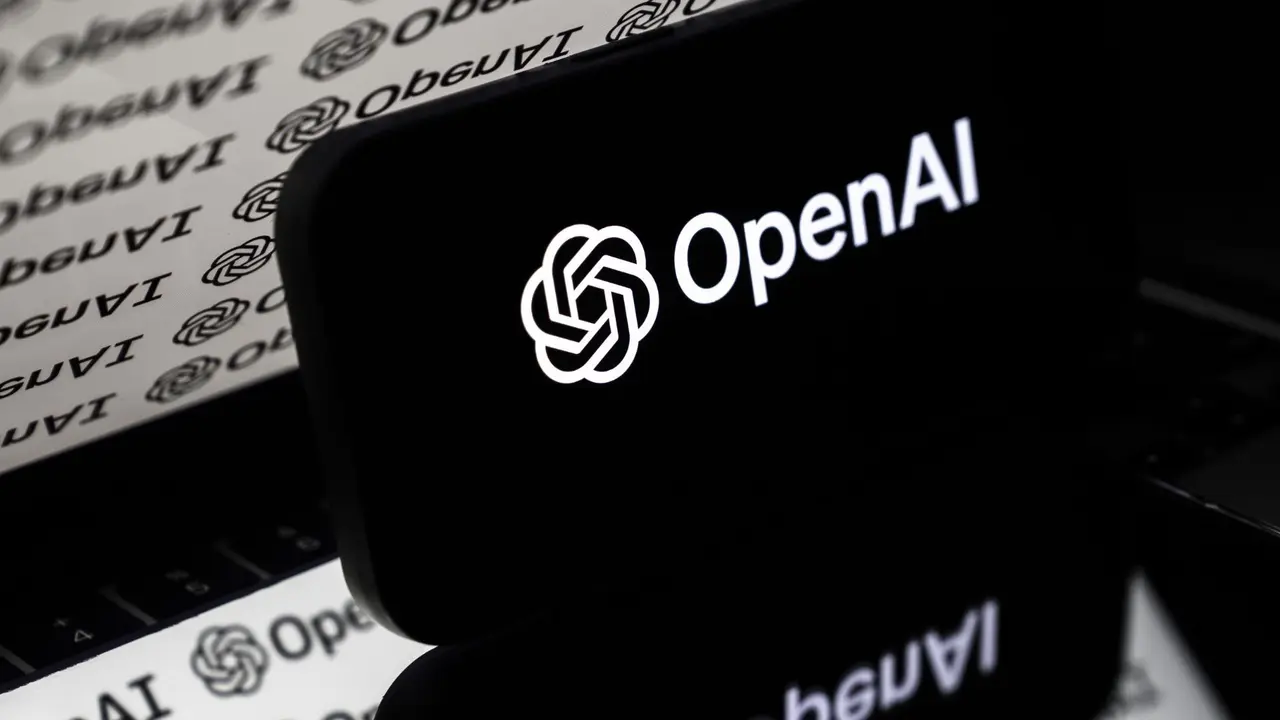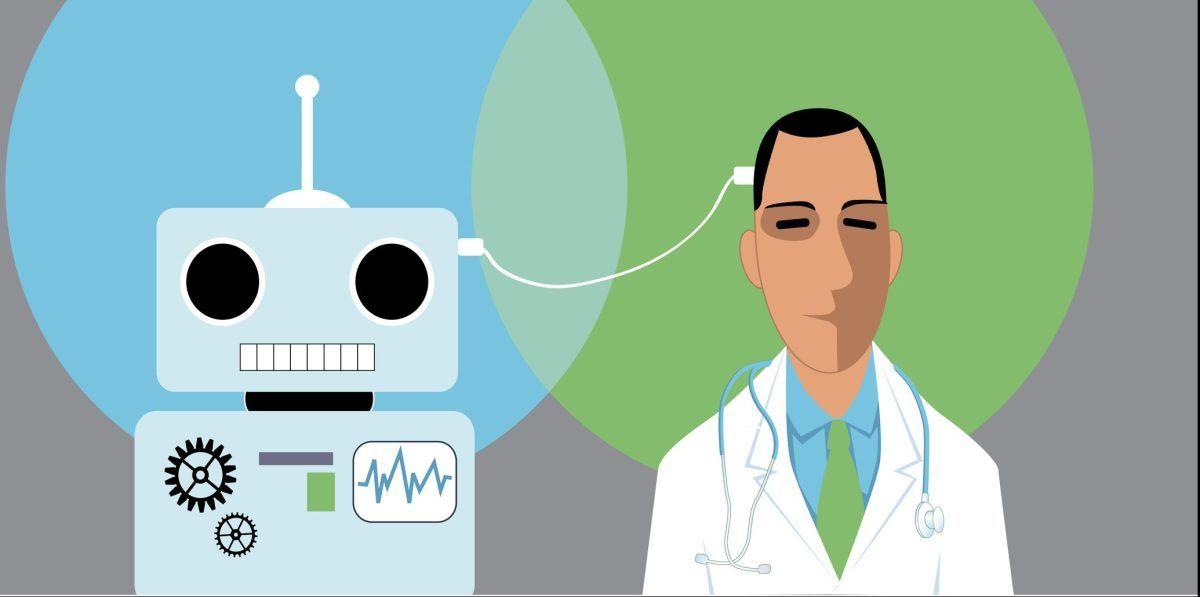Northwestern's Generative AI System Revolutionizes Radiology, Boosting Efficiency by Up to 40%
3 Sources
3 Sources
[1]
Generative AI system from Northwestern doubles radiology efficiency
Northwestern UniversityJun 6 2025 A first-of-its-kind generative AI system, developed in-house at Northwestern Medicine, is revolutionizing radiology - boosting productivity, identifying life-threatening conditions in milliseconds and offering a breakthrough solution to the global radiologist shortage, a large new study finds. The findings will be published on Thursday (June 5) in JAMA Network Open. This is, to my knowledge, the first use of AI that demonstrably improves productivity, especially in health care. Even in other fields, I haven't seen anything close to a 40% boost." Dr. Mozziyar Etemadi, senior author, assistant professor of anesthesiology at Northwestern University Feinberg School of Medicine and of biomedical engineering at Northwestern's McCormick School of Engineering For the study, the AI system was deployed in real-time across the 12-hospital Northwestern Medicine network, where nearly 24,000 radiology reports were analyzed over a five-month period in 2024. Etemadi's team then compared radiograph report creation times and clinical accuracy with and without the AI tool. The results: an average 15.5% boost in radiograph report completion efficiency - with some radiologists achieving gains as high as 40% - without compromising accuracy. Follow-on work, still unpublished, shows up to 80% efficiency gains and enables the tool for CT scans. The time saved allowed radiologists to return diagnoses much faster, particularly in critical cases in which every second counts. According to the study authors, this is the first generative AI radiology tool in the world to be integrated into a clinical workflow. It also is the first time a generative AI model has demonstrated both high accuracy and increased efficiency across all types of X-rays, from skulls to toes. 'It doubled our efficiency' Unlike other narrow AI tools currently on the market that focus on detecting a single condition, Northwestern's holistic model analyzes the entire X-ray or CT scan. It then automatically generates a report that is 95% complete and personalized to each patient, which the radiologist can choose to use, review and finalize. These reports summarize key findings and offer a template to augment the radiologists' diagnosis and treatment. "For me and my colleagues, it's not an exaggeration to say that it doubled our efficiency. It's such a tremendous advantage and force multiplier," said co-author Dr. Samir Abboud, chief of emergency radiology at Northwestern Medicine and clinical assistant professor of radiology at Feinberg. Flagging life-threatening conditions In addition to improving efficiency, the AI system flags life-threatening conditions like pneumothorax (collapsed lung) in real time - before a radiologist even looks at the X-rays. As the AI model drafts reports for every image, an automated tool monitors those reports for critical findings and cross-checks them with patient records. If the system identifies a new condition that needs urgent intervention, it could immediately alert radiologists. "On any given day in the ER, we might have 100 images to review, and we don't know which one holds a diagnosis that could save a life," Abboud said. "This technology helps us triage faster - so we catch the most urgent cases sooner and get patients to treatment quicker." The Northwestern team also is adapting the AI model to detect potentially missed or delayed diagnoses, such as early-stage lung cancer. 'No need to rely on tech giants' Rather than adapting large, internet-trained models like ChatGPT, the Northwestern engineers built their own system from scratch using clinical data from within the Northwestern Medicine network. That allowed the team to create a lightweight, nimble AI model designed specifically for radiology at Northwestern - faster, more accurate and requiring far less computing power. "There is no need for health systems to rely on tech giants," said first author Dr. Jonathan Huang, a third-year medical student at Feinberg who holds a Ph.D. in biomedical engineering from McCormick. "Our study shows that building custom AI models is well within reach of a typical health system, without reliance on expensive and opaque third-party tools like ChatGPT. We believe that this democratization of access to AI is the key to drive adoption worldwide," Etemadi added. Solving a global shortage Radiology is becoming one of health care's biggest bottlenecks. By 2033, the U.S. is expected to experience a shortage of up to 42,000 radiologists, as imaging volumes rise by up to 5% annually while radiology residency positions increase by just 2%. Northwestern's AI system offers a solution, helping radiologists clear backlogs and deliver results in hours instead of days. And while the technology is powerful, it won't replace humans. "You still need a radiologist as the gold standard," Abboud said. "Medicine changes constantly - new drugs, new devices, new diagnoses - and we have to make sure the AI keeps up. Our role becomes ensuring every interpretation is right for the patient." Two patents have been approved for the Northwestern Medicine technology and others are in various stages of the approval process. The tool is in the early stages of commercialization. The study is titled "Efficiency and Quality of Generative AI-Assisted Radiograph Reporting" Northwestern University Journal reference: Huang, J., et al. (2025). Efficiency and Quality of Generative AI-Assisted Radiograph Reporting. JAMA Network Open. doi.org/10.1001/jamanetworkopen.2025.13921.
[2]
First generative AI fully embedded in clinical radiology boosts productivity by 40% without compromising accuracy
A first-of-its-kind generative AI system, developed in-house at Northwestern Medicine, is revolutionizing radiology -- boosting productivity, identifying life-threatening conditions in milliseconds and offering a breakthrough solution to the global radiologist shortage, a large new study finds. The findings are published today in JAMA Network Open. "This is, to my knowledge, the first use of AI that demonstrably improves productivity, especially in health care. Even in other fields, I haven't seen anything close to a 40% boost," said senior author Dr. Mozziyar Etemadi, an assistant professor of anesthesiology at Northwestern University Feinberg School of Medicine and of biomedical engineering at Northwestern's McCormick School of Engineering. For the study, the AI system was deployed in real-time across the 12-hospital Northwestern Medicine network, where nearly 24,000 radiology reports were analyzed over a five-month period in 2024. Etemadi's team then compared radiograph report creation times and clinical accuracy with and without the AI tool. The results: an average 15.5% boost in radiograph report completion efficiency -- with some radiologists achieving gains as high as 40% -- without compromising accuracy. Follow-on work, still unpublished, shows up to 80% efficiency gains and enables the tool for CT scans. The time saved allowed radiologists to return diagnoses much faster, particularly in critical cases in which every second counts. According to the study authors, this is the first generative AI radiology tool in the world to be integrated into a clinical workflow. It also is the first time a generative AI model has demonstrated both high accuracy and increased efficiency across all types of X-rays, from skulls to toes. 'It doubled our efficiency' Unlike other narrow AI tools currently on the market that focus on detecting a single condition, Northwestern's holistic model analyzes the entire X-ray or CT scan. It then automatically generates a report that is 95% complete and personalized to each patient, which the radiologist can choose to use, review and finalize. These reports summarize key findings and offer a template to augment the radiologists' diagnosis and treatment. "For me and my colleagues, it's not an exaggeration to say that it doubled our efficiency. It's such a tremendous advantage and force multiplier," said co-author Dr. Samir Abboud, chief of emergency radiology at Northwestern Medicine and clinical assistant professor of radiology at Feinberg. Flagging life-threatening conditions In addition to improving efficiency, the AI system flags life-threatening conditions like pneumothorax (collapsed lung) in real time -- before a radiologist even looks at the X-rays. As the AI model drafts reports for every image, an automated tool monitors those reports for critical findings and cross-checks them with patient records. If the system identifies a new condition that needs urgent intervention, it could immediately alert radiologists. "On any given day in the ER, we might have 100 images to review, and we don't know which one holds a diagnosis that could save a life," Abboud said. "This technology helps us triage faster -- so we catch the most urgent cases sooner and get patients to treatment quicker." The Northwestern team also is adapting the AI model to detect potentially missed or delayed diagnoses, such as early-stage lung cancer. "Having a draft report available, even before it is viewed by the radiologist, offers a simple, actionable datapoint that can be quickly and efficiently acted upon. This is completely different than traditional triage systems, which need to meticulously be trained one by one on each and every diagnosis," said Etemadi. 'No need to rely on tech giants' Rather than adapting large, internet-trained models like ChatGPT, the Northwestern engineers built their own system from scratch using clinical data from within the Northwestern Medicine network. That allowed the team to create a lightweight, nimble AI model designed specifically for radiology at Northwestern -- faster, more accurate and requiring far less computing power. "There is no need for health systems to rely on tech giants," said first author Dr. Jonathan Huang, a third-year medical student at Feinberg who holds a Ph.D. in biomedical engineering from McCormick. "Our study shows that building custom AI models is well within reach of a typical health system, without reliance on expensive and opaque third-party tools like ChatGPT. We believe that this democratization of access to AI is the key to drive adoption worldwide," Etemadi added. Solving a global shortage Radiology is becoming one of health care's biggest bottlenecks. By 2033, the U.S. is expected to experience a shortage of up to 42,000 radiologists, as imaging volumes rise by up to 5% annually while radiology residency positions increase by just 2%. Northwestern's AI system offers a solution, helping radiologists clear backlogs and deliver results in hours instead of days. And while the technology is powerful, it won't replace humans. "You still need a radiologist as the gold standard," Abboud said. "Medicine changes constantly -- new drugs, new devices, new diagnoses -- and we have to make sure the AI keeps up. Our role becomes ensuring every interpretation is right for the patient." Two patents have been approved for the Northwestern Medicine technology and others are in various stages of the approval process. The tool is in the early stages of commercialization. The study is titled "Efficiency and Quality of Generative AI-Assisted Radiograph Reporting."
[3]
AI Can Boost Radiologists' Efficiency Without Sacrificing Accuracy
By Dennis Thompson HealthDay ReporterMONDAY, June 9, 2025 (HealthDay News) -- Artificial intelligence (AI) can boost radiologists' ability to quickly and accurately assess people's X-rays, a new study says. Some radiologists became 40% more efficient at reviewing images with the help of a custom-built AI program, researchers reported June 5 in JAMA Network Open. "This is, to my knowledge, the first use of AI that demonstrably improves productivity, especially in health care. Even in other fields, I haven't seen anything close to a 40% boost," senior researcher Dr. Mozziyar Etemadi said in a news release. He's an assistant professor of anesthesiology and biomedical engineering at Northwestern University in Chicago. Northwestern engineers built the AI system from scratch, using clinical data from the Northwestern Medicine network. The AI system analyzes X-ray imaging and issues a report that is 95% complete and personalized to each patient, researchers said. A radiologist then reviews the AI report along with the imaging scan and issues their own diagnosis. The system also flags life-threatening conditions like a collapsed lung in real time, and an automated tool cross-checks the AI report against patient records. Radiologists are immediately alerted of new conditions that require urgent intervention. For this study, the AI system was deployed in real-time across the 12-hospital Northwestern Medicine network. Nearly 24,000 radiology reports were analyzed during five months of 2024, half with and half without AI assistance, researchers said. Results found an average boost of nearly 16% in efficiently completing X-ray reports, without compromising accuracy. Some radiologists achieved efficiency gains as high as 40%. "For me and my colleagues, it's not an exaggeration to say that it doubled our efficiency. It's such a tremendous advantage and force multiplier," said researcher Dr. Samir Abboud, chief of emergency radiology at Northwestern Medicine. "On any given day in the ER, we might have 100 images to review, and we don't know which one holds a diagnosis that could save a life," Abboud said. "This technology helps us triage faster -- so we catch the most urgent cases sooner and get patients to treatment quicker." Researchers said the system has since been further improved to enable AI assessment of CT scans. These latest tweaks have shown up to 80% efficiency gains, according to as-yet-unpublished results. The Northwestern team also is adapting its AI to spot potentially missed or delayed diagnoses for difficult-to-detect conditions like early-stage lung cancer. "Our study shows that building custom AI models is well within reach of a typical health system, without reliance on expensive and opaque third-party tools like ChatGPT," Etemadi said. "We believe that this democratization of access to AI is the key to drive adoption worldwide." These results indicate that AI could help manage a growing shortage in radiology specialists. By 2033, the U.S. is expected to be short as many as 42,000 radiologists, researchers said in background notes. Meanwhile, imaging is projected to rise by 5% annually while radiology positions increase by just 2%. However, AI will not replace humans, Abboud said. "You still need a radiologist as the gold standard," he said. "Medicine changes constantly -- new drugs, new devices, new diagnoses -- and we have to make sure the AI keeps up. Our role becomes ensuring every interpretation is right for the patient." Northwestern has taken out two patents on the technology, and others are pending, researchers said.
Share
Share
Copy Link
A groundbreaking generative AI system developed by Northwestern Medicine has significantly improved radiology efficiency without compromising accuracy, offering a potential solution to the global radiologist shortage.
Breakthrough in Radiology Efficiency
Northwestern Medicine has developed a groundbreaking generative AI system that is revolutionizing the field of radiology. The system, which has been integrated into clinical workflows across Northwestern's 12-hospital network, has demonstrated significant improvements in efficiency without compromising accuracy
1
.Impressive Efficiency Gains
A large study published in JAMA Network Open revealed that the AI system boosted radiograph report completion efficiency by an average of 15.5%, with some radiologists achieving gains as high as 40%
2
. Dr. Mozziyar Etemadi, the senior author of the study, stated, "This is, to my knowledge, the first use of AI that demonstrably improves productivity, especially in health care"1
.Comprehensive Analysis and Real-Time Alerts

Source: News-Medical
Unlike narrow AI tools that focus on detecting single conditions, Northwestern's holistic model analyzes entire X-rays or CT scans. It generates reports that are 95% complete and personalized to each patient
2
. The system also flags life-threatening conditions like pneumothorax in real-time, allowing for faster triage and treatment of urgent cases3
.Custom-Built Solution
The Northwestern team built their AI system from scratch using clinical data from within their network. This approach allowed them to create a lightweight, nimble model specifically designed for radiology at Northwestern, which is faster, more accurate, and requires less computing power than adapting large, internet-trained models like ChatGPT
1
.Addressing the Radiologist Shortage
With the U.S. expected to face a shortage of up to 42,000 radiologists by 2033, Northwestern's AI system offers a potential solution. It helps radiologists clear backlogs and deliver results more quickly, with some cases being resolved in hours instead of days
2
.Related Stories
Future Developments and Commercialization

Source: Medical Xpress
The Northwestern team is adapting the AI model to detect potentially missed or delayed diagnoses, such as early-stage lung cancer. Follow-up work, still unpublished, shows efficiency gains of up to 80% and enables the tool for CT scans
1
. Two patents have been approved for the technology, with others in various stages of the approval process, and the tool is in the early stages of commercialization2
.The Role of Radiologists
Despite the power of this technology, experts emphasize that it will not replace human radiologists. Dr. Samir Abboud, chief of emergency radiology at Northwestern Medicine, stated, "You still need a radiologist as the gold standard. Medicine changes constantly – new drugs, new devices, new diagnoses – and we have to make sure the AI keeps up"
3
.Democratizing AI in Healthcare
The success of Northwestern's custom-built AI system demonstrates that creating such tools is within reach of typical health systems. Dr. Jonathan Huang, the first author of the study, emphasized, "There is no need for health systems to rely on tech giants"
2
. This development could pave the way for wider adoption of AI in radiology and other medical fields, potentially transforming healthcare delivery and improving patient outcomes.References
Summarized by
Navi
[2]
Related Stories
Recent Highlights
1
AI Chatbots Sway Voters More Effectively Than Traditional Political Ads, New Studies Reveal
Science and Research

2
Trump signs executive order to override state AI laws despite bipartisan pushback
Policy and Regulation

3
OpenAI warns upcoming AI models will likely pose high cybersecurity risk with zero-day exploits
Technology








